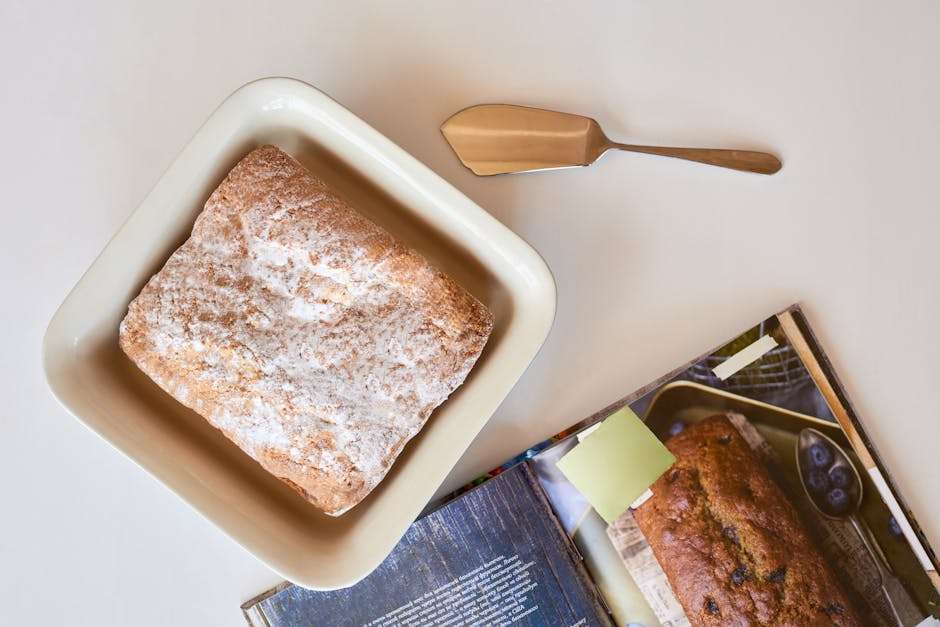A Guide to Baking with Alternative Flours ?
Baking is an art, and like any art form, it thrives on experimentation and creativity. One fascinating way to spice up your baking routine is by using alternative flours. Whether you’re gluten-intolerant, health-conscious, or just curious, this guide will walk you through the world of alternative flours. From almond to coconut, let’s explore how these unique ingredients can transform your culinary creations.
Table of Contents
1. Introduction to Alternative Flours
2. Popular Alternative Flours
3. Tips for Baking with Alternative Flours
4. Recipes to Get You Started
5. Conclusion
6. FAQ
Introduction to Alternative Flours ?
Alternative flours are flours made from non-traditional sources like nuts, seeds, or roots. They offer unique flavors and textures, often bringing additional nutritional benefits to the table. Unlike regular wheat flour, these flours can be gluten-free, making them ideal for people with celiac disease or gluten sensitivity.
Popular Alternative Flours ?
Almond Flour
Almond flour is made from finely ground almonds and is a favorite among low-carb and gluten-free bakers. It’s rich in healthy fats, protein, and vitamin E. Use it for moist cakes, cookies, and even bread. However, its high-fat content means you might need to adjust the amount of oil or butter in your recipes.
Coconut Flour
Coconut flour is a fiber-rich, gluten-free flour made from dried coconut meat. It’s highly absorbent, so you’ll need to use less of it compared to other flours. It pairs well with moist ingredients and is great for making pancakes, muffins, and sweet treats.
Rice Flour
Rice flour, made from finely milled rice, is a versatile gluten-free flour that works well in both sweet and savory recipes. It’s often used in Asian cuisine and is perfect for making crispy coatings or thickening sauces.
Chickpea Flour
Chickpea flour, also known as garbanzo bean flour, is a protein-rich flour with a slightly nutty taste. It’s excellent for savory dishes and works wonders in making flatbreads, fritters, and even as an egg substitute in vegan recipes.
Tips for Baking with Alternative Flours ?
Baking with alternative flours can be a bit tricky, but with a few tips, you’ll be a pro in no time!
1. Blend Flours: Mixing different alternative flours can balance out flavors and textures. For instance, combining almond flour with coconut flour can create a well-rounded taste.
2. Adjust Liquids: Some alternative flours, like coconut flour, absorb more liquid. You may need to increase the amount of wet ingredients in your recipes.
3. Use Binders: Gluten-free flours lack the binding properties of wheat flour. Adding ingredients like eggs, flaxseed meal, or xanthan gum can help improve texture and structure.
4. Start Small: If you’re new to alternative flours, start by substituting a portion of your regular flour with an alternative flour. This allows you to get a feel for how the flour behaves in baking.
Recipes to Get You Started ?
Almond Flour Chocolate Chip Cookies
Ingredients: Almond flour, baking soda, salt, coconut oil, maple syrup, vanilla extract, and chocolate chips. These cookies are chewy, nutty, and delightfully delicious!
Coconut Flour Pancakes
Ingredients: Coconut flour, eggs, milk (or almond milk), baking powder, and a pinch of salt. These pancakes are fluffy and perfect for a weekend brunch.
Chickpea Flour Savory Crepes
Ingredients: Chickpea flour, water, salt, and your choice of fillings like spinach and feta. These crepes are perfect for a light lunch or dinner.
Conclusion ?
Baking with alternative flours opens up a world of possibilities, offering exciting flavors and textures. Whether you’re looking to expand your culinary horizons or need to accommodate dietary restrictions, these flours provide a fantastic solution. Embrace the experimentation and have fun discovering your new favorite recipes!
FAQ ?
Q: Can I substitute alternative flours for regular flour in any recipe?
A: Not always. Alternative flours have different properties and may require recipe adjustments. It’s best to follow recipes specifically designed for these flours.
Q: Are alternative flours healthier than regular flour?
A: Many alternative flours provide additional nutrients, such as protein and fiber. However, “healthier” depends on your dietary needs and goals.
Q: Which alternative flour is best for gluten-free baking?
A: It depends on what you’re making! Almond and coconut flours are popular for sweets, while rice and chickpea flours work well in savory dishes.
Q: How should I store alternative flours?
A: Store them in an airtight container in a cool, dry place. For longer shelf life, consider refrigerating or freezing them.
Q: Can I use alternative flours to thicken sauces?
A: Yes, some alternative flours like rice flour can be used to thicken sauces, but they might alter the flavor slightly.
Happy baking with your newfound knowledge of alternative flours! ??
